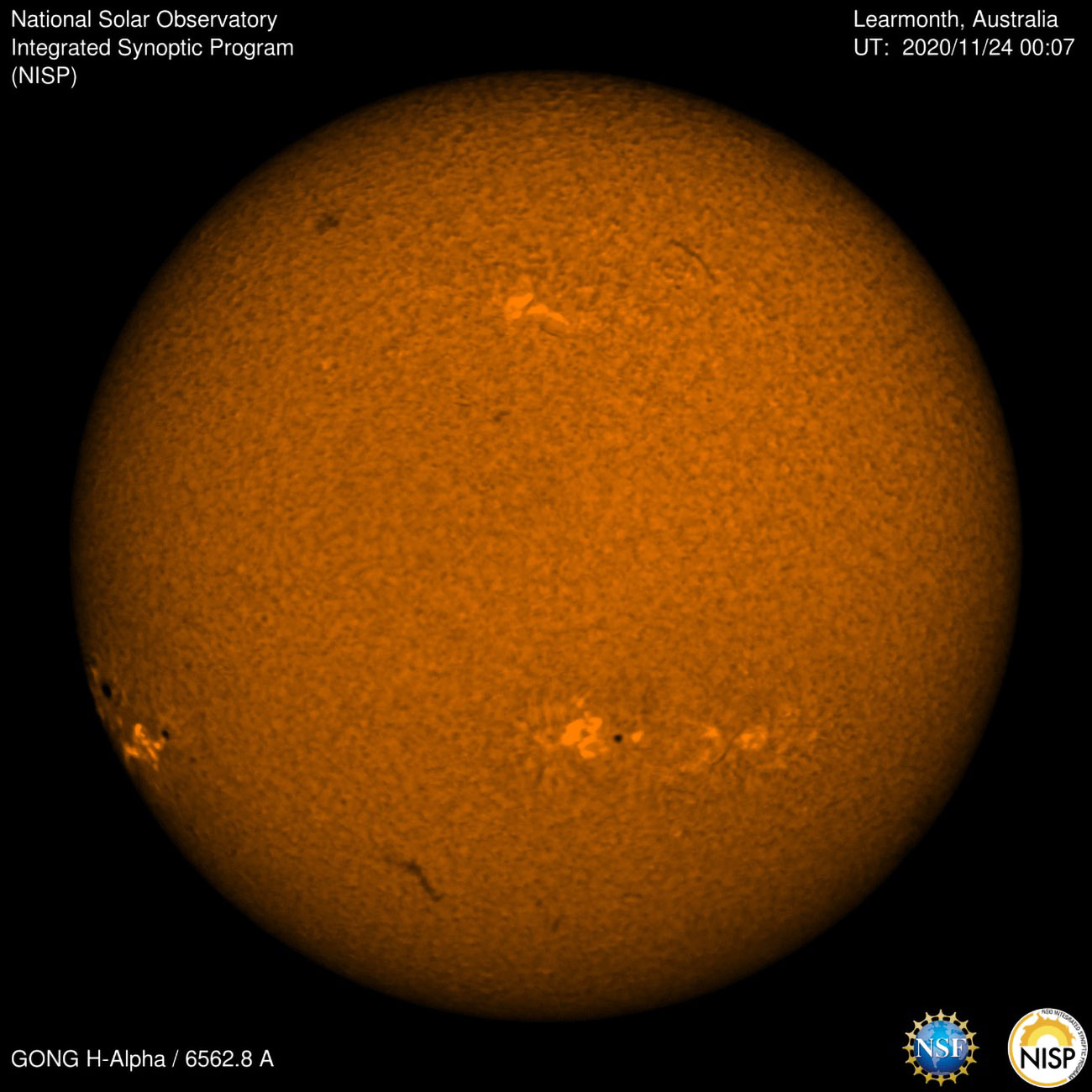NSO: NSF’s National Solar Observatory Predicts a Large Sunspot for Thanksgiving

A large sunspot, predicted by NSO scientists, rotated onto the face of the Sun. Credit: NSO/AURA/NSF
On November 18 scientists from the US National Science Foundation’s National Solar Observatory predicted the emergence of a new sunspot group just in time for Thanksgiving. Using a special technique called helioseismology, the team has been “listening” to changing sound waves from the Sun’s interior which beckon the arrival of the large feature. Recent changes in these sound waves pointed to the imminent appearance of a new sunspot group which we can now see from Earth near the eastern solar limb.
“We measured a change in acoustic signals on the far-side of the Sun”, explains Dr. Alexei Pevtsov, Associate Director for NSO’s Integrated Synoptic Program, the program responsible for the prediction. “We can use this technique to identify what is happening on the side of the Sun that faces away from Earth days before we can catch a glimpse from here. Having up to five days lead time on the presence of active sun spots is extremely valuable to our technology-heavy society.”
Solar storms often originate in sunspot regions, especially if the sunspot is large and complicated. The more tangled the magnetic field, the more likely it will result in large solar flares and coronal mass ejections which in turn can result in space weather effects at Earth. These include impacts on communications, GPS and possibly electrical grid systems. NSO provides 24/7 “eyes on the Sun” through the GONG network which is funded by NSF and NOAA. The network consists of six monitoring stations positioned across the globe, observing the Sun’s magnetic field and other features all day every day.
“The ability of GONG to identify and track active regions emergent on the far side of the Sun has important implications for future space weather predictive capabilities,” said Dr. Carrie Black, Program Director at NSF. “GONG continues to be a valuable tool for both fundamental science research and operations.”
Dr. Kiran Jain, the scientist who is leading the far side prediction at NSO, describes the evolution of the sunspot as “the strongest far-side signal we have had this solar cycle. We first noticed the signal in our far-side images on November 14, 2020,” she continues. “It was inconspicuous at first but grew quickly, breaking detection thresholds just one day later. Since we are in the very early phase of the new solar cycle, the signal from this large spot stands out clearly.”
